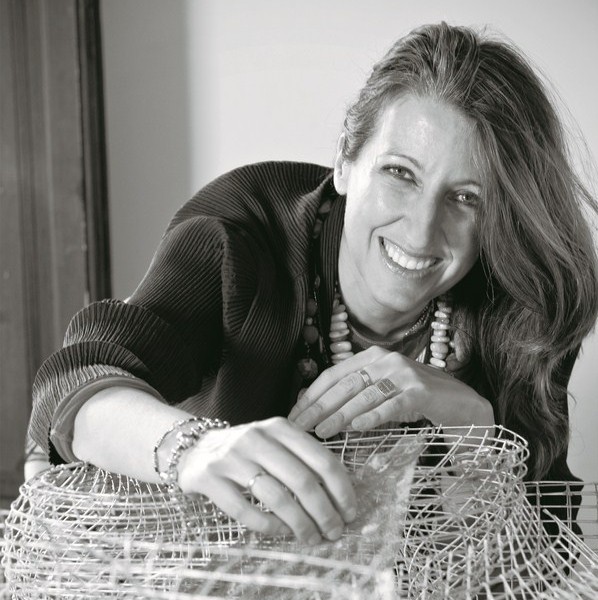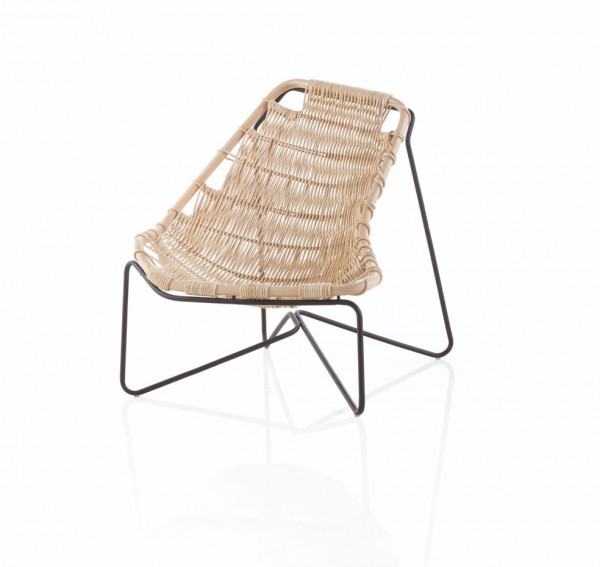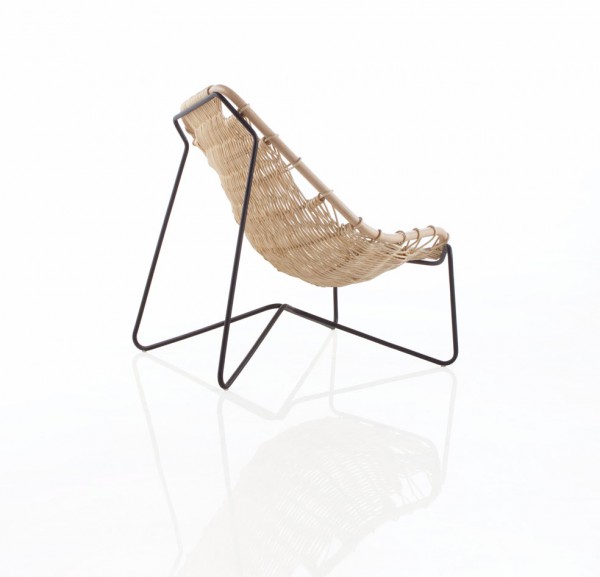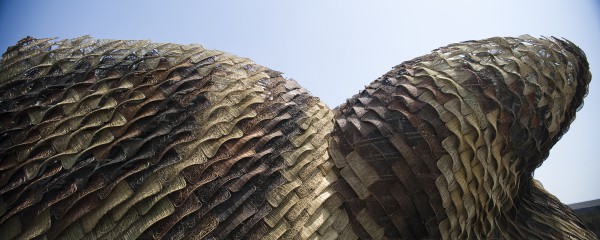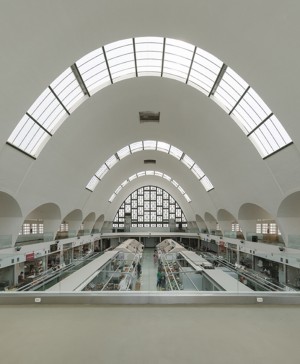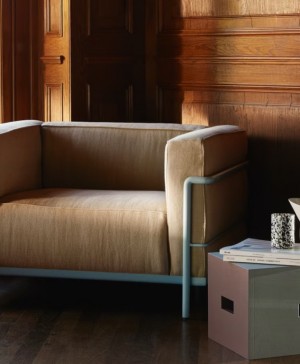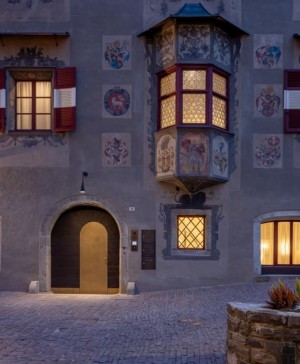Relaxed yet decisive – Benedetta Tagliabue responds to your questions.
Tomás: Do you think your architectural language has varied considerably over your career? Or has your vision always been ‘organic’?
I think that it has varied, but in small ways. It’s about small transformations that appear similar, but over the years, when you compare them, your see that there is an evolution. I think this is a natural process, and a logical one given that your environment is influential, as are societal changes and things that other people do. Architecture is a part of all these changes, it’s an open, continuous conversation.
Yoharilin: What do you think to be your contribution to Architecture?
I am honestly not too sure. I think we try to lend a natural element to the city, to buildings and objects.
Martín: Over the years, which architects have you and Enric admired?
Enric was the sort of person who had a new hero every two weeks – that was a lot of fun for me. We used to joke about why every two weeks he would say that ‘this’ person is the best in the universe. The important thing is to choose your own references. Concretely, I think that Le Corbusier was our number one reference. But beyond professional peers, there are are many things can influence your life.
Rodrigo: Which Architecture books for you and your husband, and even those that are not related to the discipline, have been key in creating the studio’s character?
This is something that Enric tried to make known. In our opinion, sometimes books not about Architecture are more useful than the ones that are. I am talking about those by the Situationists and the writers from the OuLiPo groups, for example. Mixing disciplines is a lot of fun and leads to gaining influences from other environments. This is our aim with the Fundación Enric Miralles, where we not only work with architects, but also with photographers, sociologists, chefs…with all sorts of people, so that, above all, we can have more fun.
Ana: What have your gained from designing an object, in this case a chair, as opposed to a building?
I have had a lot of fun. I think that designing an object for people to sit down in and use their body with is actually more difficult that than carrying out an architectural project. Firstly, because you need to invent something, which is difficult in itself because nearly everything has been done before. Then it has to be comfortable, which is not an easy thing to do. For us, working with wicker has been wonderful as it’s a material that is inherently comfortable without having to add springs, cushions or anything of the sort. I am so happy with this design. We don’t normally do furniture design in the studio, unless it’s something specifically made for a building, but after this experience we would like to do more.
Silla Tina, designed this year for Expormim.
Paula: I am an industrial designer, one of the few women in the profession. Given this, do you perceive any differences in a product designed by a woman as opposed to one designed by a man? Are there any ‘female qualities’ that we should be exploiting, be it in the concept, execution or marketing?
You can answer that yourself by choosing some objects by designers whom you don’t know and guess if it was designed by a man or woman. If you are able to guess more than a 60%, then there must be something in it.
Alicia: Do you think a ‘feminine’ vision exists in object and building design? If so, what does it bring to Architecture?
In my opinion there is more or less a ‘feminine’ way to approach the arts but that doesn’t always correspond to a man or woman. There are many men that make very ‘feminine’ Architecture, and woman that make ‘masculine’ Architecture. Gae Aulenti was a woman that made very masculine things. And Enric Miralles was a man that introduced feminine curves in his projects. In Architecture today, which is carried out by men and women, I think that in general it is very feminine in the sense that how it deals with specific situations. Concerning the managing of a studio, women carry out things slightly differently, but it’s so subtle that you can’t set a rule of thumb.
Martín: It it necessary to have a deep knowledge of the history of Architecture in order to be cutting edge?
I’m not sure if on the history of Architecture, but at least you need to know about the era you live in. Because if you don’t know what already exists, it’s difficult to be revolutionary. I don’t think we have been. In the case of Enric, he was more the sort of person who wanted to propose different ways of thinking.
Rodrigo: What is you opinion on experimentation and project investigation given the current economic crisis, not so much as an obstacle, but as an impediment to creativity and imagination?
I think that experimentation goes beyond the current economic downturn. If you experiment, you will always encounter economic difficulties, because it’s not an easy road to tread. It’s also the most expensive way to work because instead of making one model for one idea, you might end up by making 40. Then 39 are rejected…
Stefy: The majority of the project’s that your studio carries out are related to their place in almost a natural way, becoming an enrichment of it. In the past years you have started to work in Asia, where everything changes very quickly, natural elements have been leveled by bulldozers and human artefacts have been demolished or at least will be in the near future. What would your advice be to an architect who has the opportunity to create on a ‘blank canvas’?.
It’s very difficult to work on a ‘blank canvas’. I don’t know how others do it, but I can’t. But in any case ‘blank’ is never ‘nothing,’ There is always a context. Being able to work in different locations is fantastic as it really makes you discover new things and other points of view. The other day I was with a group of friends trying to list, in a fun way, all the things I have discovered working in Asia. I realised this has made me change, little by little. Of course it also changes your concept of Architecture and what Architecture can contribute, because you find yourself amongst people who have a different way of looking at things. This, at least for me, is super interesting.
Spanish Pavilion for the Universal Exhibition, Shanghai 2010
Blanca: Are you in favor of the use of clay cement for the interior, for better comfort, temperature and air control? In other words, do you use natural products in your buildings so as not to affect the health of the users?
Natural products and those that promote well-being interest me enormously, although I must say that there is a lot I need to learn on the subject. But I have a lot of friends who practice bio-architecture and in the Fundación Enric Miralles we do courses on the subject because I think it’s fantastic and needs to be developed further.
Guillermo: Why do you think that the facades of residential buildings have lost their beauty? They are all the same; cubes, more or less conceptually minimalist, with no use of ceramic or glass. Do you think they have lost originality?
I am not sure that’s the case. Obviously we live in a time where decorative facades are not exactly ‘in’. A few hundred years ago they were very important, now it’s more about ‘undressing’ the building. But it’s a style, like any other, and that doesn’t mean it won’t change in the future.
Toni: The rooftop of the Mercado de Santa Caterina is as attractive as it difficult to see. I understand that is was expensive to do. In civil projects, the cost (which of course is set by the authorities) should take priority and funds should be spent on the high quality construction as opposed to artifice. Is it possible that you committed an error projecting such and unusual element that is only visible from the air? Do you know if Barcelona City Hall is planning to up a series of giant mirrors so that people can see the roof?
From your question, it seems that you are saying that the rooftop is invisible and in truth that’s not the case. It’s visible to all the people that live near the market who before looked out over a roof made of asbestos. Also, in part the roof actually highlights the marketplace as it’s a very unusual element. If it were more visible, it would be too much. That said, I love this idea of mirrors. I should also say that some time ago I presented various solutions to make the roof more visible but haven’t been able to move forward with them. But I think it should be done. I have it here, in a drawer. If you feel like fetching it and presenting it to City Hall I would be delighted.
Rooftop of the Mercado de Santa Caterina, Barcelona.
Santurino: Given that engineering firms and companies that make prefab solutions are becoming more and more important in the world of building, mainly because they offer a much cheaper way of doing things and are supported by the globalised system, what is the future of architecture in situ, that is projects that have been conceived for the location and get built in ‘local’ materials and by traditional methods?
I don’t agree that the prefab constructive systems are more widespread or economical, not at all. Actually it’s the opposite. It’s still a long way off that prefabricated systems are more accesible and prices needs to come down. It’s not as easy as you think. We tried working with prefab window systems on a residential project that we are finishing off in Barajas (Madrid) and it wasn’t easy. I think it’s an option that is lacking in creativity.
Sebastian: How should one approach an architecture competition?
Firstly, you should choose it well – you can’t apply yourself to everything. Then you should devise a group strategy. Then, depending on the competition, invite people to collaborate with you. Then you have to design it, keeping in mind what the project really needs in order to win. And if you win, you may not even get the commission. In other words, it’s a very difficult process, but it’s what we architects have to do.
Tomás: In the studio, how do you deal with the organisation and functional rigidity of Architecture and the fluidity of your buildings?
I think we also have much fluidity in our organisation in our studio. The way that we work is very similar to the formal result of our projects.
Iñaki: I am a student of Architecture. Is it possible to do work experience in your studio?
Yes, we have many students doing work experience. You need to come to the studio, have an interview and tell us what you want. Our architecture studio is almost like a workshop, where a lot of people are learning things.
Miro: From what I understand, many students work in your studio for nothing, or because they want to be able to include the experience in their CV. Is this true? What do you think of companies that don’t pay their interns?
It is true and I think that their experience as an intern has brought a lot to me – above all, enthusiasm and the opportunity to be with young people. But I also give them a lot. Our senior architects spend a great deal of their time introducing and teaching them. This mixture of professionalism and academia is, in part, how our studio works – it’s a lovely thing and I want it to stay that way. There was a time when we didn’t have interns. Now we are about half and half. I would love our interns to be able to get a grant. We have asked many times, but it’s generally not possible.
Michele: I have just finished studying Architecture but I know there are still many things I need to learn. What would you recommend I do now?
I honestly don’t know. But one thing I would recommend is staying open-minded; travel, try to understand the mentality of others – and luckily we are living in a world that is opening up more and more. Being able to travel and have access to understanding others is one of the few fundamental capacities we have left.
Mari: Out of curiosity, what is your favourite shop and cafe in Barcelona. Where do you go when you need a break?
There is a wonderful clothes shop in Barcelona called Jean Pierre Bua, but you can’t go too often as their clothing is of really high quality so often quite expensive. I also like a very nice shop called Notenóm. As for having a coffee, there are many great cafes in the old town. I am fascinated by Escribá but really I go anywhere. Sometimes I go to the cafe next to my studio – it’s very comfortable.
Enric Miralles and Benedetta Tagliabue. Photo: Yoshio Futagawa.
Patricia: Do you think you would have been as successful if you had not married Enric Miralles?
Probably not. Enric Miralles has been fundamental in my life and in my carrer – I have always said that I hope it’s been noted. We have started a foundation in his name, because I want to be very clear about how important he was in the formation of our studio. If I hadn’t had met Enric Miralles, what would have happened? I don’t know – Maybe I wanted to meet someone like him, and when we did the attraction was mutual. In life, things happen because of destiny – it is impossible to imagine one’s life without its key events.
Bruno: If you could meet your 25-year old self, what advice would you give her, both professionally and personally?
Luckily I won’t be meeting my 25-year old self because I wouldn’t know what to say to myself. In general. I have had a lot of fun over the years. I like to think it was all destiny and that life was meant to be like that. That’s all.
Read more about Benedetta Tagliabue on diarioDESIGN

